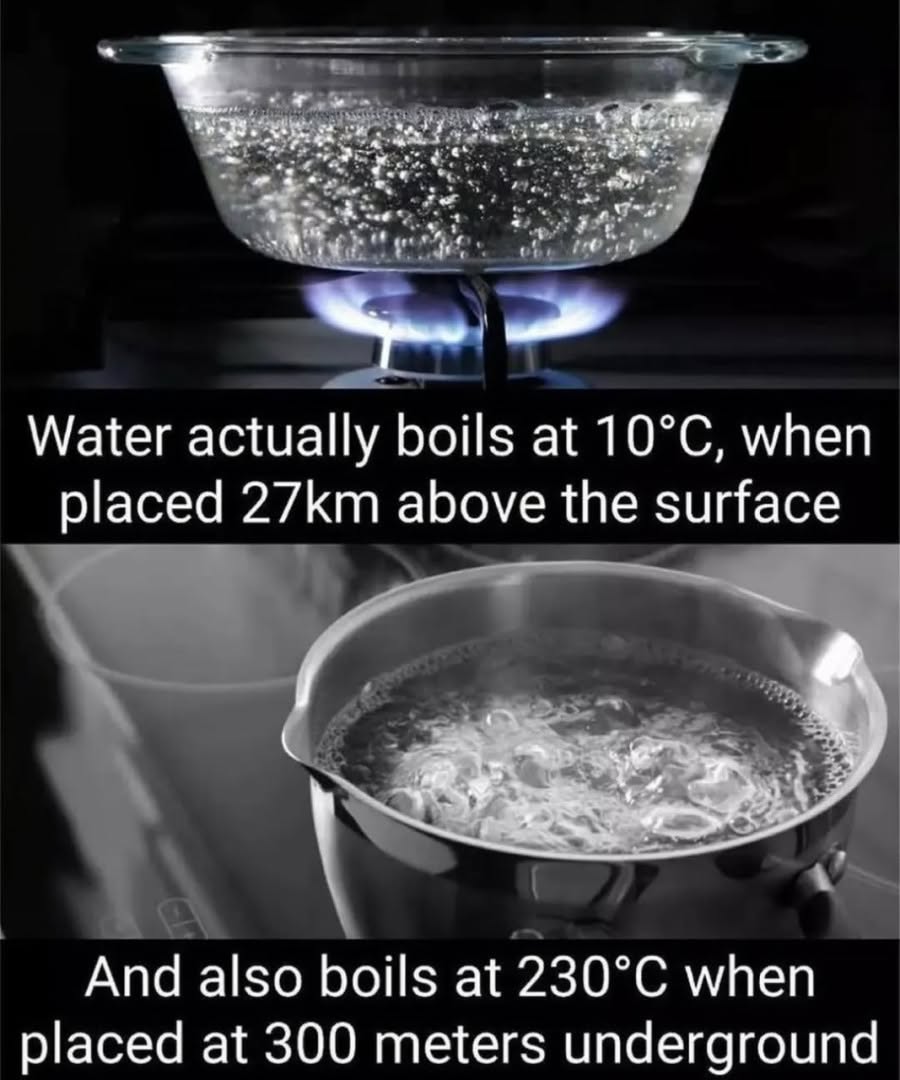ADVERTISEMENT
Why It Matters
This isn’t just a fun science fact — it has real-world implications:
- In aerospace and space travel, understanding how liquids behave at different altitudes is critical. For example, astronauts need pressurized suits and cabins because bodily fluids (including water in their eyes or saliva) could begin to boil at body temperature in a vacuum or very high altitude.
- Cooking at altitude: Even on mountains, water boils at lower temperatures, which affects cooking times and food safety. Though you won’t reach 10°C boiling on Earth’s surface, it’s still noticeable at high elevations like the Himalayas.
Final Thoughts
The fact that water boils at 10°C at 27 km altitude is a powerful demonstration of how pressure influences physical properties. It also highlights the importance of controlled environments in high-altitude aviation, space exploration, and even scientific experiments conducted in low-pressure chambers.
Next time you boil water, just remember — what seems like a basic act in the kitchen is a finely balanced interplay between temperature and pressure that changes dramatically depending on where you are on (or above) the Earth.
